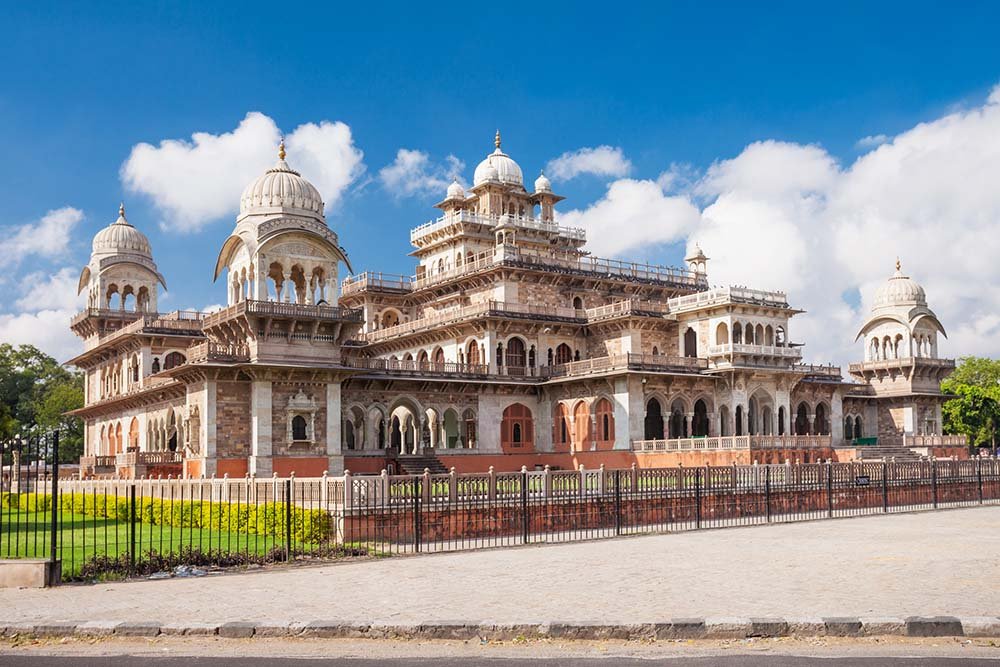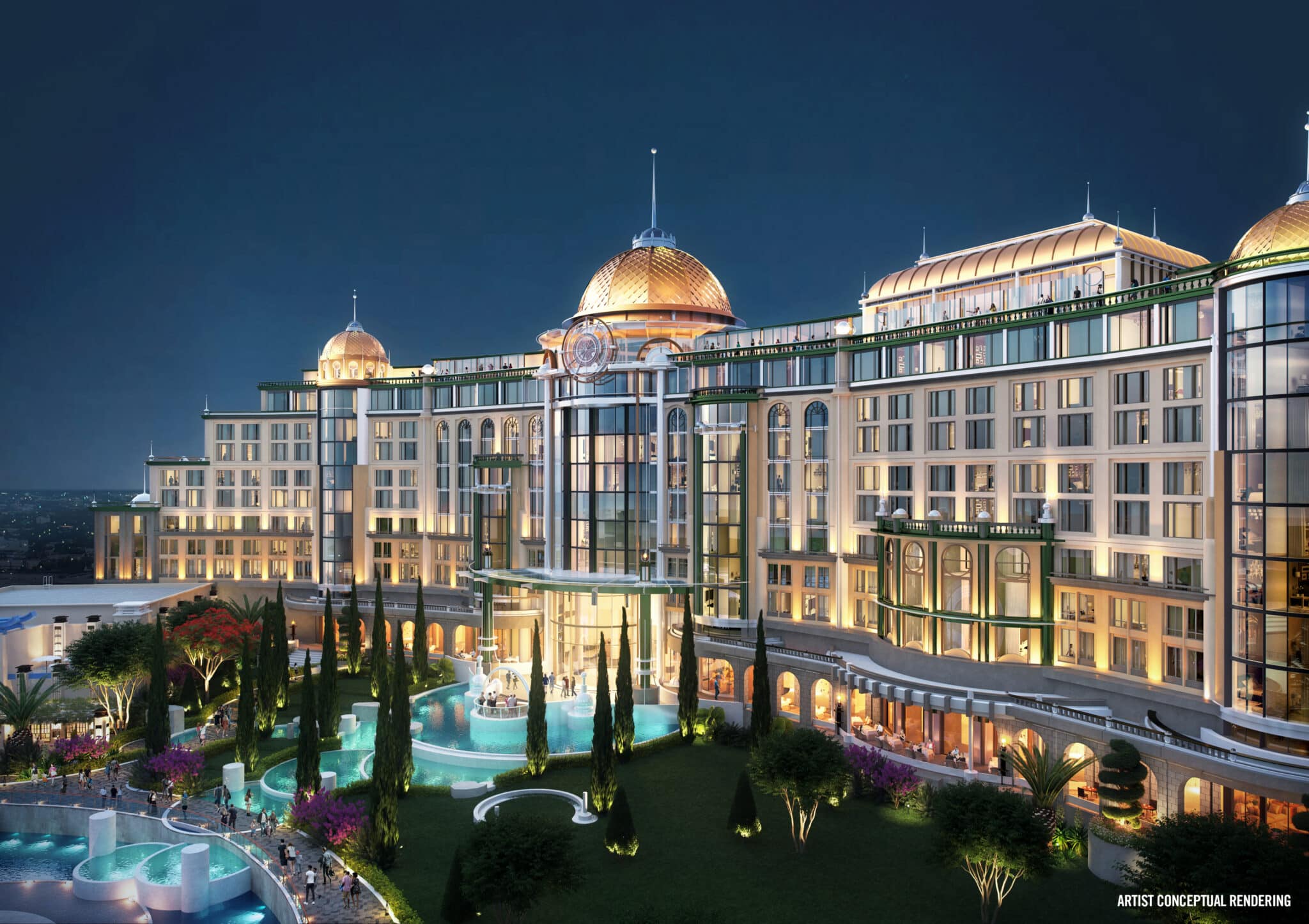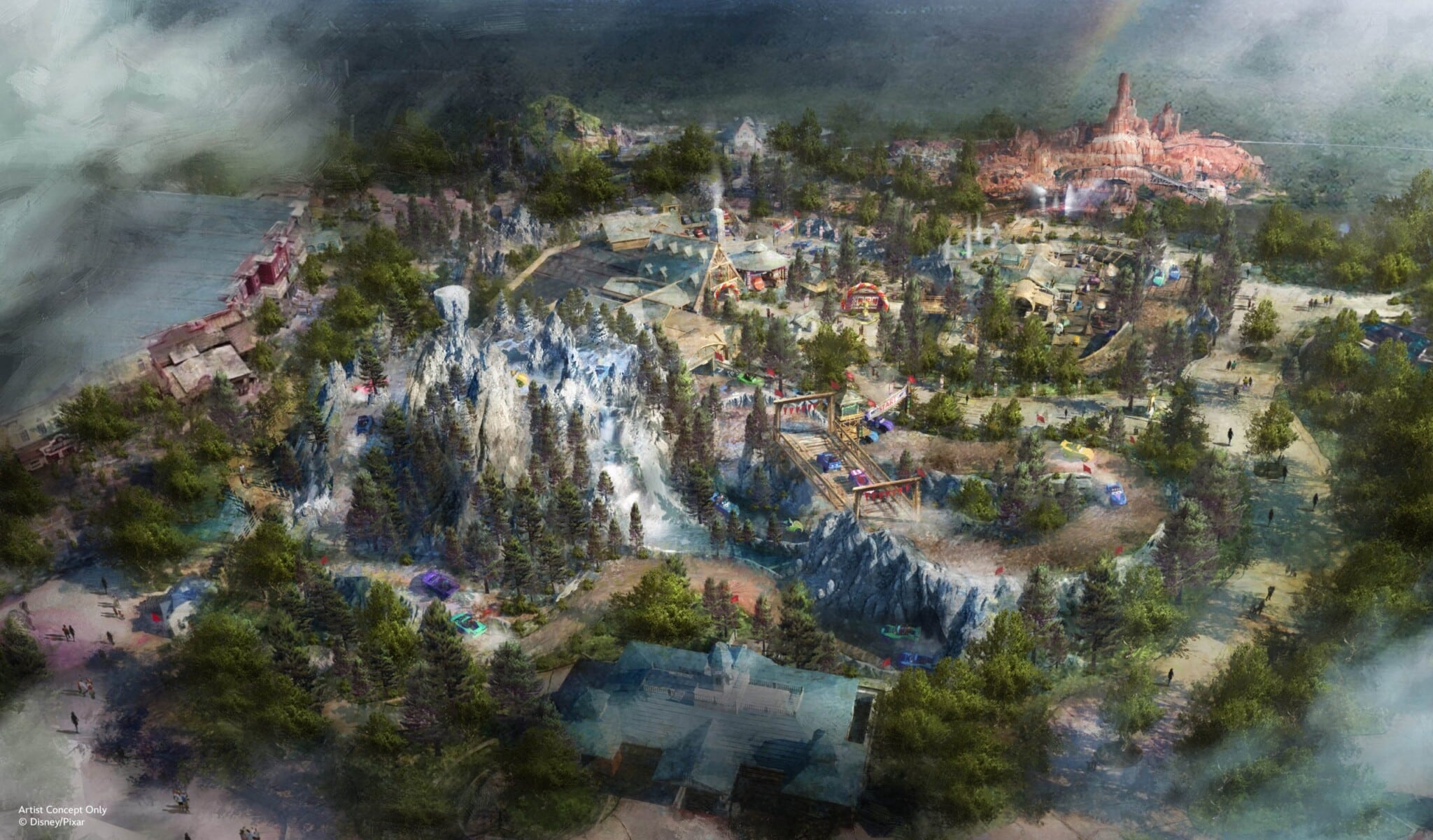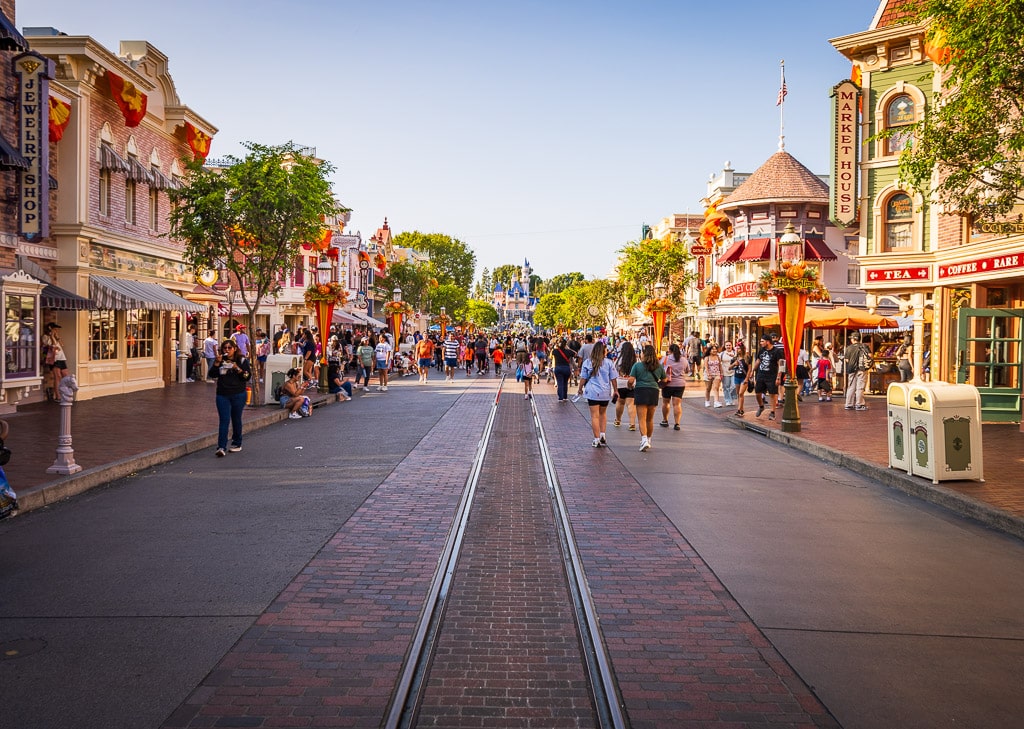Jaipur is the capital city of the state of Rajasthan in India. The city was planned in an urban grid in the 18th century even when the concept of planned cities didn’t exist in the country. In order to welcome the British nobleman, the city was painted pink and came to be known as the “Pink city” to the world. Contrasting yet synchronizing with the modern world Jaipur is one of the few cities left that is still able to preserve its tradition, legacy and the old-world charm in the course of modernization. The city is brimming with culture, heritage, art, and architecture in its nook and corner. Tourists from all across the globe gravitate to the pink city for its age-old forts, palaces, heritage structures and markets. For outsiders, this city invokes both amusement and awe.
Full of hidden treasures Jaipur has something new to explore every time but for the first-timers here is a list of 10 quintessential places that are not to be missed while in the Pink city.
Amer Fort – The forgotten capital
The fort of Amber was the erstwhile capital of the Kachawaha clan. Built-in the 16th century it was later extended and renovated over 150 years by the succeeding generations of the Kachawahas. Strategically constructed on a high hilltop for defence the fort overlooks a water reservoir called Maota. The lake which was the source of the forts water supply also houses a floating garden- the Kesar Kyari that used to host dance ceremonies for the royals. The fort is now a UNESCO world heritage site for its perfect amalgamation of Hindu and Mughal architecture.
It is divided into four major sections. Each of its sections has a massive entrance and a courtyard. The planning of the fort follows a hierarchy that segregates public spaces from the private palaces. The Diwani- Aam and Diwani- Khaas are the intricately carved staterooms that held the sessions for public and courtiers respectively. The Sheesh Mahal also called the “palace of thousand mirrors” is the highlight of the fort best viewed in the light of a single candle. Near the Sheesh Mahal there is a unique inlay in marble known as the magic flower that assumes seven different shapes depending upon the angle it is observed from. The best way to reach the fort is to take an elephant ride that is available from the car park at the bottom of the fort and takes the visitors up the main courtyard.
- Location: Devisinghpura, Amer, Jaipur, Rajasthan
- Open times: 8 am to 5:30 pm
- Entry fee: Rs 500
See Tickets
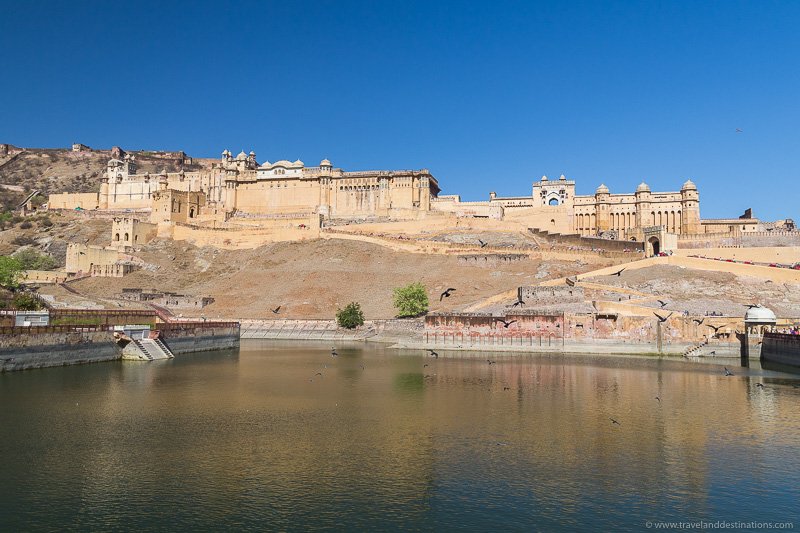
You May Like
Nahargarh – The abode of tigers
The palace of Nahargarh is surrounded by hills where tigers once wandered freely. Finding a tiger isn’t a sure bet anymore but a visit to the Nahargarh is a must. Owing to its location the fort offers a panoramic view of the city from several vantage points. People often gather here to watch dreamy sunsets and crispy sunrises in the backdrop of the cityscape. Be it Bollywood directors, the tourists or the locals the fort is a favourite amongst all.
The palace itself was constructed as a retreat home housing 12 identical suites for each of the 12 queens and a head suite for the king. The terrace of the fort is open to visitors to enjoy both the view and the architecture of the palace. The fort complex houses several other structures including a stepwell, a wax museum, a wildlife sanctuary and two restaurants. For people who love to trek the ramparts of the fort and the surrounding hills have various trekking opportunities.
- Location: Krishna Nagar, Brahampuri, Jaipur, Rajasthan
- Open times: 10 am to 6 pm (for the palace only)
- Entry fee: Rs 200
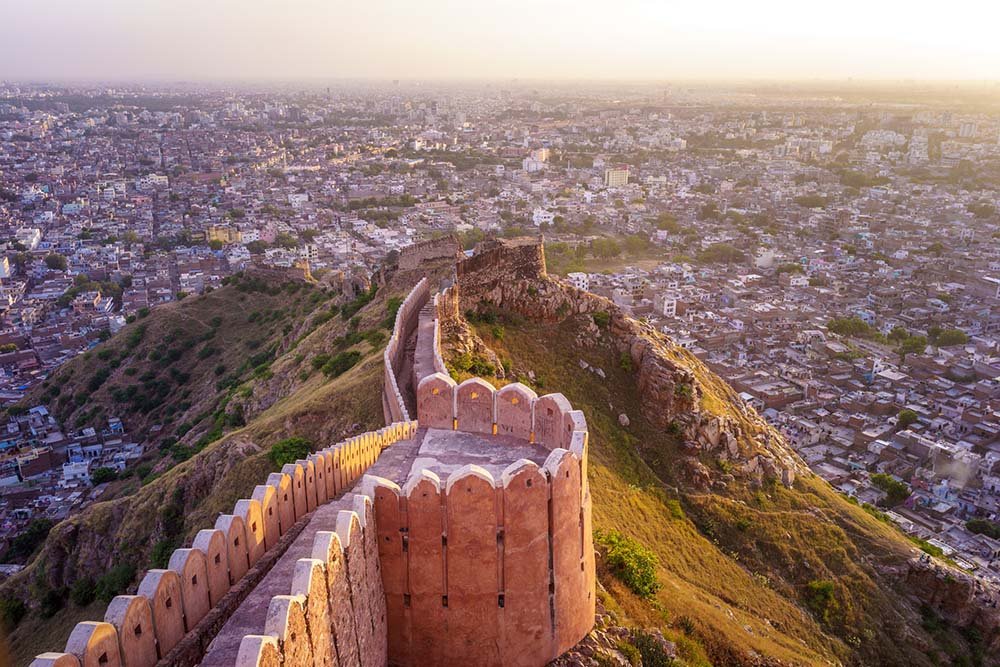

ADVERTISEMENT
CONTINUE READING BELOW
Hawa Mahal – The palace of the wind
The Hawa Mahal is a part of the much larger city palace complex. It is an iconic landmark of the country and the tallest structure of the world to be built without a foundation. Located in the dead centre of the old city the original purpose of the building was to facilitate the royal women watch ceremonies and processions during olden times.
The five-story crown-shaped façade of the building is dotted with almost a thousand screened windows that rise across all the levels like a honeycomb hive. The windows are called Jharokha and were made to serve various purposes. They were a place to sit and watch the happenings of the street, provided air circulation inside the building and shielded the interiors from the direct penetration of harsh desert sun. To complement the overall colour scheme of the city the Hawa mahal is clad in red sandstone. The uppermost level of the building overlooks the city place complex one side and the old city market on the other providing good photographic opportunities for people who want to capture the city scene.
- Location: Hawa Mahal Rd, Badi Choupad, J.D.A. Market, Pink City, Jaipur, Rajasthan 302002
- Open times: It can be visited on all days from 9:00 am to 5:00 pm (the exterior façade looks best in early morning sunlight for photography
- Entry fee: Rs 50
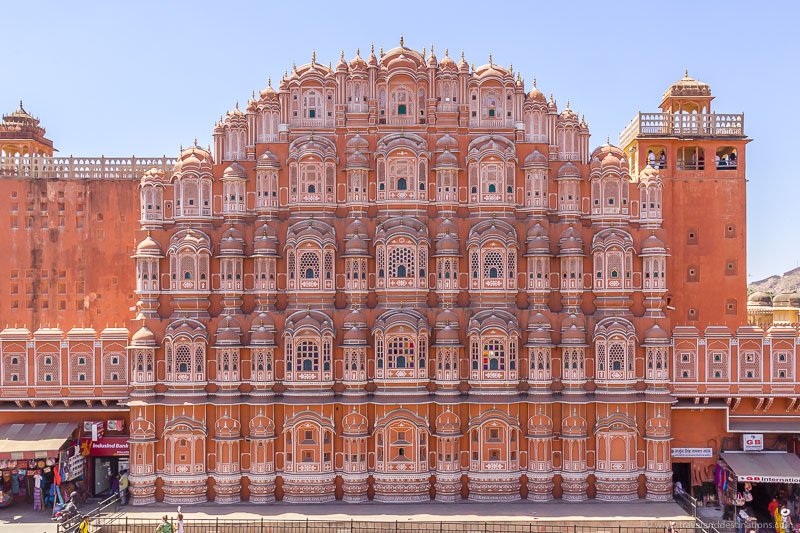

You May Like
Johri Bazaar – A shopper’s paradise
Nothing quite compares to the archaic charm of the most sought-after city’s oldest market- the Johri bazaar. The legendary and historical bazaar is a place to see how the old way of living and the modern world coexist in a symphony. Designed as a semi-covered colonnade the market has shops on its lower and houses on its upper level where people still live. The streets are swarmed with rickshaws, horse carriages, motorbikes and colourfully dressed people.
The by lanes jutting out of the main street of Johri bazaar will leave shopaholics smitten in a blink. Each of these narrow lanes has its speciality to sell. From bangles in Maniharon Ka Raasta, jewellery in Haldiyon Ka Raasta and tie and dye products of Bapu Bazaar, they are a treasure trove for handicrafts items. Haggling is both expected and recommended here. The food scene is also very inviting for people who want to go local with what they eat. Ghee walon ka Raasta is famous for its savouries and Laxmi Misthan Bhandaar for its sweets. The food stalls on the streets sell everything from Kachoris to Bhelpuri sandwiches catering to all kinds of palates with both authentic and adapted delicacies.
- Location: Gangori Bazar, Pink City, Jaipur, Rajasthan 302007
- Open times: 11 am to 9 pm
- Entry: free
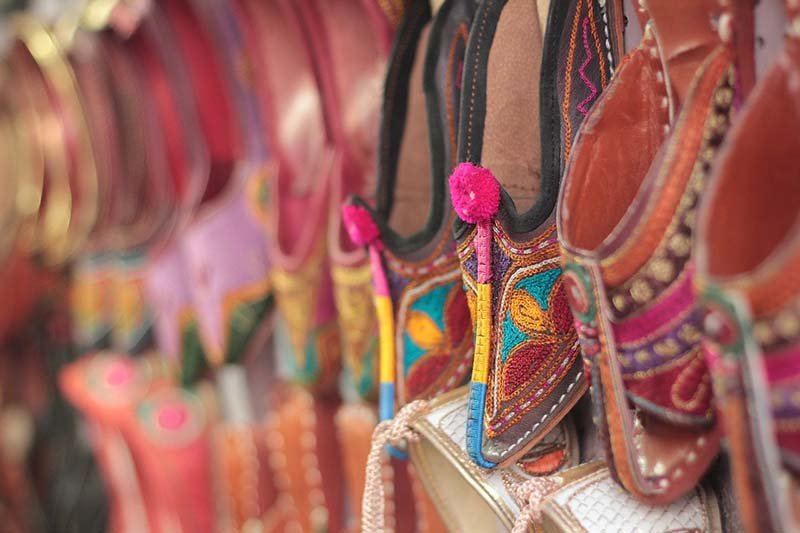

Panna Meena Ka Kund – An engineering and an architectural marvel
The 16th-century stepwell is a synthesis of necessity, royal and sensible architecture. It was designed to cater to the needs of the barren lands with an ingenious system that can not only harvest the rainwater but also reduce the temperature in its proximity. There are four octagonal pavilions on its corners. The three sides of the stepwell consist of a geometrical maze-like staircase leading to the level of water in the well. The stairs juxtapose with sunlight to create a unique display of light and shadows for photographers. The fourth side is left open which used to serve as a place for daily congregations and also to take some respite from the summer heat for people of those times.
One of the unique aspects of this Baori is its inconspicuous presence. Most of the tourists are oblivious to this architectural marvel so there is plenty of space where one can sit, chat or enjoy the views away from the crowd.
- Location: Near Amber fort, Kheri Gate
- Open times: 7:00 am to 6:00 pm
- Entry fees: free
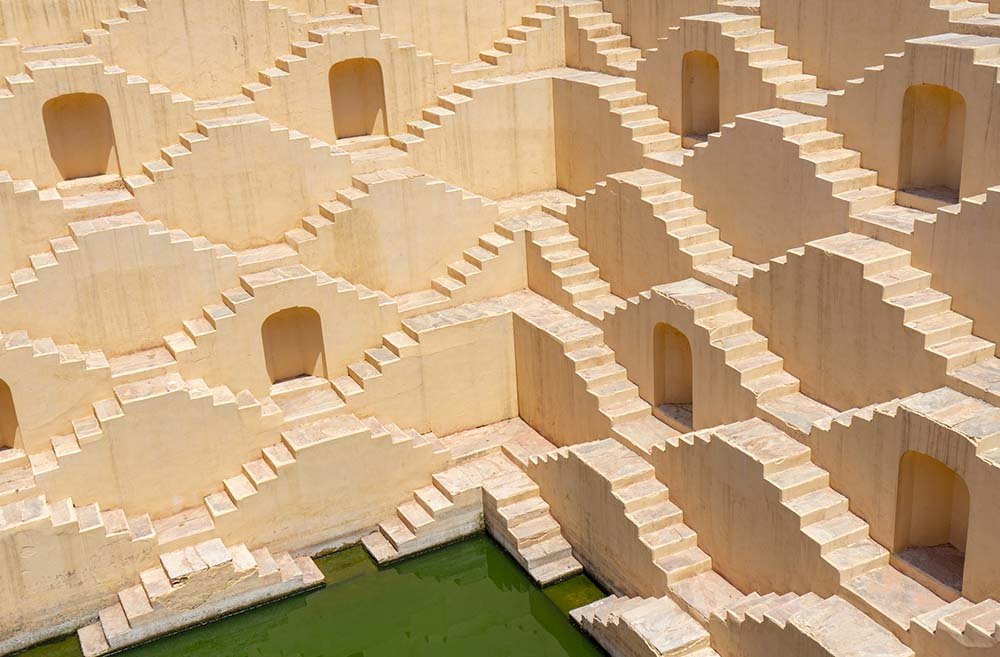

ADVERTISEMENT

CONTINUE READING BELOW
ADVERTISEMENT
CONTINUE READING BELOW
ADVERTISEMENT
CONTINUE READING BELOW
Patrika Gate – The rainbow walkway
It is a new addition to the heritage attractions of the city. Unlike most of the other heritage structures, this one isn’t in the old walled city but lies closer to the international airport of Jaipur. The gate serves as an entrance to a circular park which is incidentally the largest circular park of Asia. While the facade of the gate appears to be nothing out of the ordinary but from the inside the gate is a riot of colours. There are 9 arches in the colours of the rainbow depicting the legacy, heritage and opulence of the royal city of Jaipur.
Recently the gate It has been gaining popularity with the social media and Instagrammers as the most colourful gate of the country. The place is usually flocked photographers so it’s better to visit the gate in the early morning hours which allows having the place to yourself and admire its beauty.
- Location: JLN Road, Jawahar Circle, Jaipur, Rajasthan
- Open times: open all-day
- Entry fees: free
See Instagram Tour
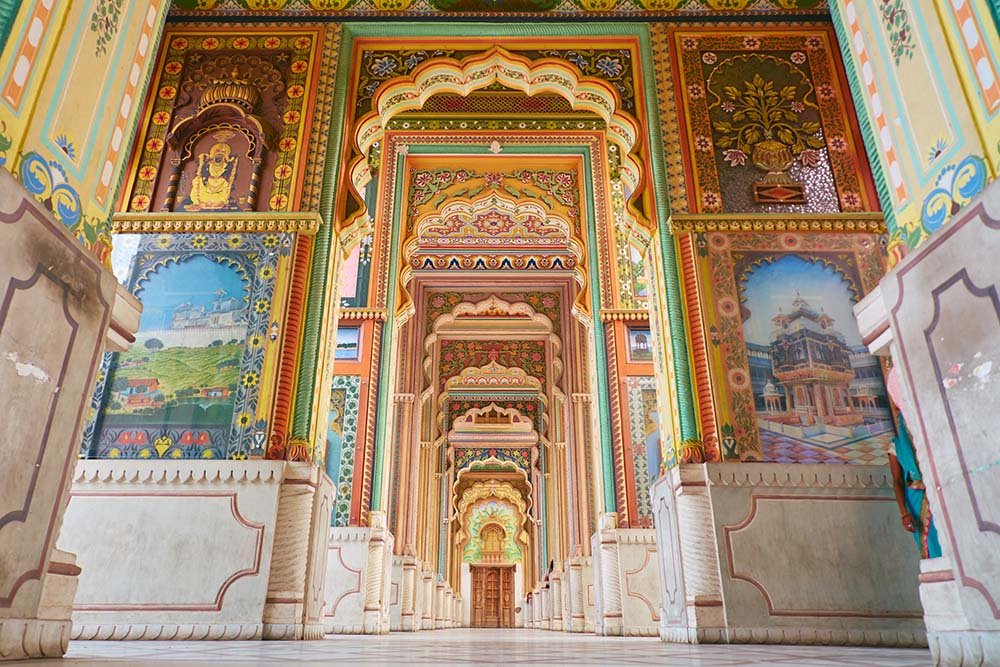

You May Like
Jantar Mantar – A walk through the time
The 18th-century astronomical observatory stands as a testament to the architectural brilliance and the level of understanding of cosmological concepts that people had during medieval times. Maharaja Sawai Jai Singh, the creator of Jantar Mantar was one of the most educated royals of those times. He had a keen eye for science, astronomy and various other subjects and was truly a Renaissance man.
There are 20 instruments of interesting geometrical shapes in the Jantar Mantar complex. The instruments are built-in stone masonry and are able to track planetary positions and lunar-solar movement through the naked eye. The sheer size and the scale of instruments are bound to make one awestricken. Some of the instruments are the largest of their kind in the world. The Samrat Yantra or the sundial is one such example and was used to measure the time from the movement of the sun with a level of precision of up to two seconds. The observatory is a part of the City Palace complex. Opting for a guided tour or audio guides is the best way to understand the purpose and the working of the instruments. There is a light and sound show conducted every evening that takes you through the by lanes of the history of the city and the making of the Jantar Mantar.
- Location: Gangori Bazaar, J.D.A. Market, Pink City, Jaipur, Rajasthan
- Open times: 9 am to 4:30 pm for the monument
- Entry fees: Rs 200
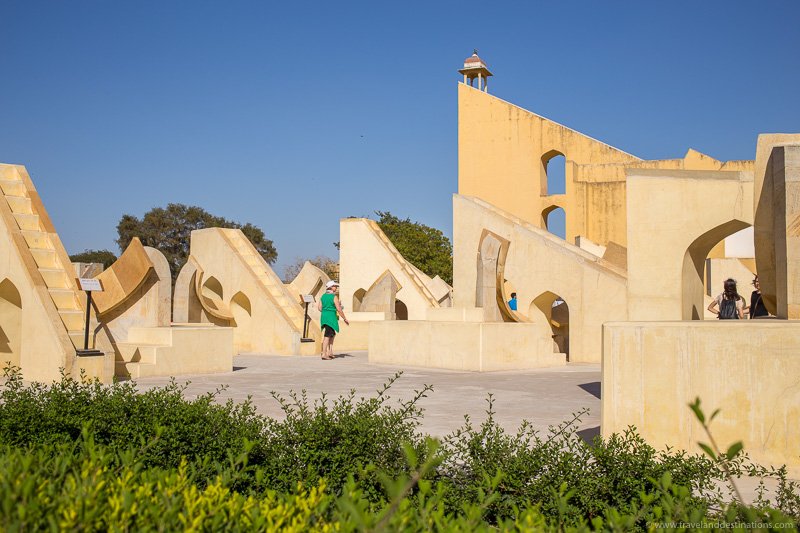

You May Like
City Palace – The city within a city
The City Palace is a sprawling complex that occupies a vast portion of the walled city of Jaipur. With a total of 1/7th of the overall area of the old city, it has numerous palaces, gardens, exhibition centres, temples and restaurants. It is safe to say that the city palace is the microcosmic form of all that Jaipur can offer. The palace has been renovated and adapted over time. It continues to serve as the residence of the royal family which lives in a private section of the palace.
The walls of the palace are packed like sardines with mirror work, murals and lattices that are a reflection of fine craftsmanship that had emerged as a result of the fusion of Mughal and Rajputi art. A substantial portion of the palace has been converted into museums to exhibit royal costumes embroidered in gold and silver, artefacts, portraits, weaponry and paintings from the multigenerational royal family. The Baradari restaurant is housed in one of the outer courtyards of the palace and is a good place to bask in the afternoon winter sun in afternoons or have a romantic summer dinner in the backdrop of the palace.
- Location: Tulsi Marg, Gangori Bazaar, J.D.A. Market, Pink City, Jaipur, Rajasthan
- Open times: 9:00 am – 05:00 pm
- Entry Fee: Rs. 500
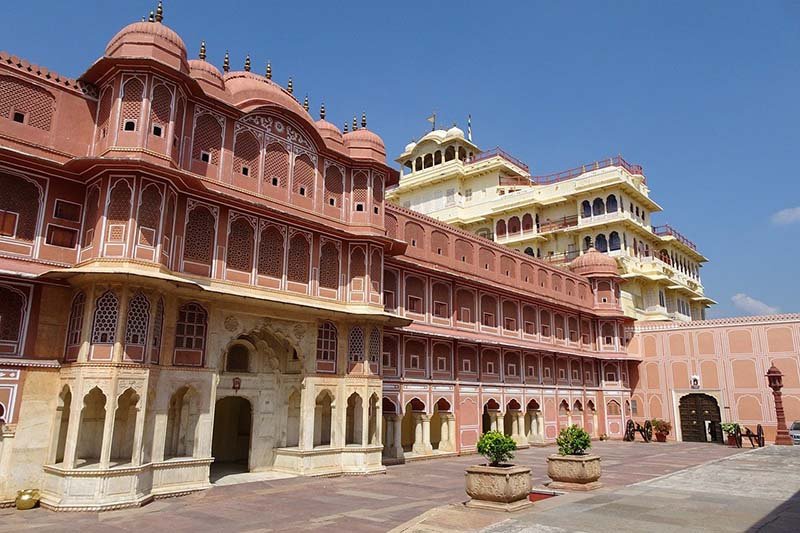

ADVERTISEMENT
CONTINUE READING BELOW
Jhalana Safari – Chasing the other big cat
The Jhalana Park was once the hunting grounds of the royals of Jaipur. Spread over an area of 20 sq km the park falls within the city limits. The park gained attention recently for leopard rehabilitation. The best way to explore the park is through an open Jeep ride which is available every morning and afternoon after prebooking. The duration of the safari is approximately 3 hours and it takes you across different terrains inside the park from flatlands, forests, lakebeds and then into the hills.
Besides leopards, many other wild animals like Blue Bulls, Spotted Deer, Monkeys, Mongoose, Hyena, Desert Fox, and Porcupine are also found during the safari. Many species of native and migratory birds like the Indian Pitta, Dusky Eagle, Spotted Owlet Flamingos, Cranes, Egrets, Dunlins, and cormorants can be seen in the park.
- Location: Jhalana safari park near Malviya Nagar industrial area Jaipur
- Open times: Morning 6:15 AM to 8:45 AM Evening: 3:30 PM to 6:15 PM
- Entry fee: 5500 for an entire Jeep that can accommodate up to 5 people
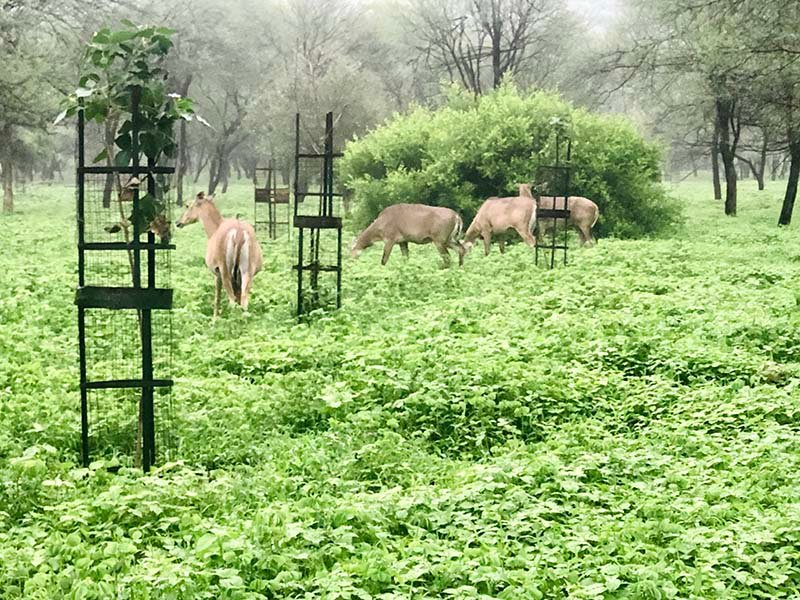

Albert Hall Museum – A sneak peek in the history of Jaipur
The oldest museum of the state is nestled in the beautiful gardens of Ram Nivas Bagh on the periphery of the old city area. It hosts an exquisite collection of ivory goods, crystal work, natural stone, and metal carved sculptures from the 17th and 18th century. Besides artefacts, the personal belongings of the rulers of the city such as their clothes, utensils and weapons are also on display. The recent addition, an Egyptian mummy from the Ptolemaic era has become the focus of the museum.
The corridors of the museum are decorated with murals from Chinese, European, Egyptian, Greek, and Babylonian civilizations. Visitors can take a tour of the museum with the assistance of an audio guide. The building is an architectural marvel in itself. It is proclaimed as the most visually stunning and decorative building of the city. Built-in Indo-Saracenic style, a combination of Indian, Neo, Gothic & Islamic architecture it has elaborate domes and richly carved arches. The building is colourfully illuminated every evening and hosts occasional city performances during special ceremonies.
- Location: Museum Road, Ram Niwas Garden, Kailash Puri, Adarsh Nagar
- Open times: 9:00 am – 05:00 pm; 7:00 pm – 10:00 pm
- Closed On: Mondays
- Entry Fee: Rs. 150
